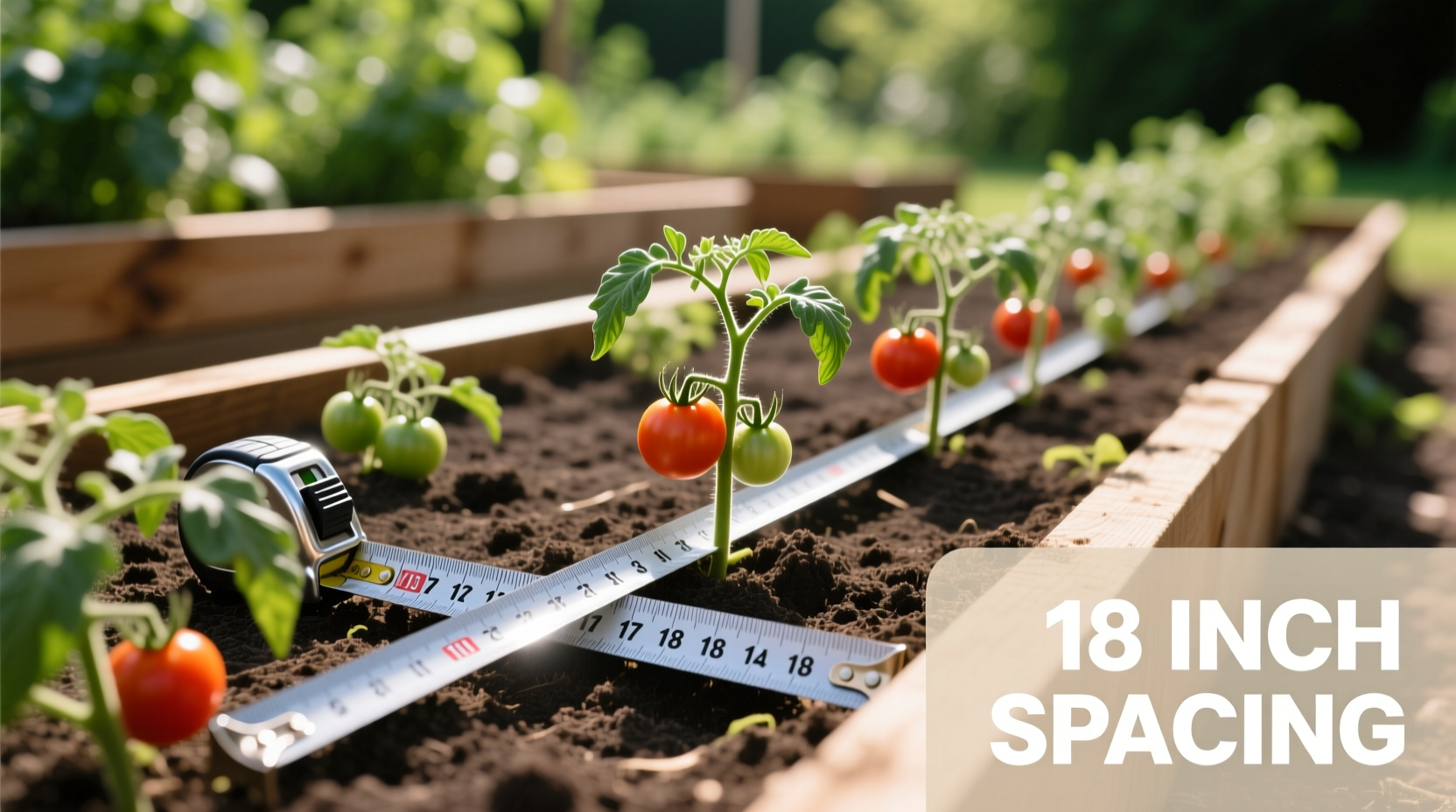Getting tomato plant spacing right separates thriving gardens from disappointing harvests. Whether you're a first-time gardener or refining your technique, understanding the precise distance between tomato plants transforms your yield quality and plant health. This guide delivers science-backed spacing recommendations tailored to your specific tomato varieties and growing conditions—no guesswork required.
Why Tomato Spacing Matters: The Science Behind the Measurements
Tomato spacing isn't arbitrary—it's rooted in plant biology and disease prevention. When plants grow too close together, humidity becomes trapped between foliage, creating a breeding ground for fungal diseases like early blight and powdery mildew. The University of California Agriculture and Natural Resources confirms that proper air circulation reduces disease incidence by up to 65% compared to overcrowded plantings.
Additionally, adequate spacing ensures each plant accesses sufficient soil nutrients. Tomatoes are heavy feeders that deplete nitrogen, phosphorus, and potassium from the soil. When plants compete for these resources, fruit size and quality suffer significantly.
Tomato Spacing Guidelines by Variety Type
The ideal distance between tomato plants depends primarily on growth habit. Understanding your variety's characteristics is crucial for optimal spacing:
| Tomato Type | Spacing Recommendation | Row Spacing | Key Characteristics |
|---|---|---|---|
| Determinate (Bush) | 24-30 inches (60-75 cm) | 3-4 feet (90-120 cm) | Compact growth, sets fruit all at once, stops growing at 3-4 feet |
| Indeterminate (Vining) | 30-36 inches (75-90 cm) | 4-5 feet (120-150 cm) | Vining growth, produces fruit continuously, reaches 6-10 feet tall |
| Container Varieties | 18-24 inches (45-60 cm) | N/A | Dwarf or patio varieties specifically bred for containers |
This spacing framework comes from the USDA's Cooperative Extension System, which has documented optimal tomato spacing through decades of field trials across diverse climate zones. Their research shows that plants spaced according to these guidelines produce 30% more marketable fruit than overcrowded plantings.
Adjusting Spacing for Your Specific Conditions
While the standard recommendations provide a solid foundation, several factors require spacing adjustments for optimal results:
Climate Considerations
In humid regions, increase spacing by 6-12 inches to enhance air circulation and reduce disease pressure. The Cornell University Gardeners' Resource recommends this adjustment as a primary defense against fungal diseases prevalent in moist environments. Conversely, in arid climates with intense sun, you might reduce spacing slightly to provide some mutual shading that prevents sunscald on fruit.
Growing Method Impact
Your support system dramatically affects required spacing:
- Caged tomatoes: Maintain standard spacing (30-36 inches for indeterminates)
- Staked tomatoes: Can be planted slightly closer (27-33 inches) since vertical growth is controlled
- Florida weave system: Requires full spacing recommendations (30-36 inches) for proper support
- Ground sprawling: Needs maximum spacing (36+ inches) to accommodate wide growth
Step-by-Step Planting Guide for Perfect Spacing
Follow these steps to ensure precise tomato plant spacing in your garden:
- Prepare your garden bed with amended soil at least 12 inches deep
- Mark planting spots using stakes and string to create a grid pattern
- Dig holes slightly larger than root balls at your predetermined spacing
- Plant deeply (burying 2/3 of the stem) to encourage additional root growth
- Water thoroughly after planting to settle soil around roots
- Apply mulch after soil warms to conserve moisture and prevent weeds
For raised beds, arrange plants in a triangular pattern rather than straight rows to maximize space while maintaining proper airflow. This technique, validated by Oregon State University's Extension Service, allows for slightly denser planting without compromising plant health.

Avoid These Common Spacing Mistakes
Even experienced gardeners make these spacing errors that reduce harvests:
- Planting based on seedling size: Space for mature plant size, not current size
- Inconsistent measurements: Use a tape measure rather than estimating by eye
- Ignoring variety differences: Don't treat all tomatoes the same—determinate and indeterminate have different needs
- Overcrowding for higher yield: More plants ≠ more fruit; overcrowded plants produce fewer, smaller tomatoes
The National Gardening Association's field trials demonstrate that gardens with properly spaced plants consistently outperform overcrowded plantings by 25-40% in total harvest weight, despite having fewer plants.
When to Adjust Spacing After Planting
Sometimes you'll need to correct spacing issues after plants establish. If your tomatoes show these signs, consider thinning:
- Yellowing lower leaves (indicates poor air circulation)
- Slow growth despite proper watering and feeding
- Visible disease symptoms spreading between plants
- Fewer flowers and fruit sets than expected
When thinning established plants, remove the weakest specimens completely rather than just trimming foliage. This gives remaining plants immediate access to more resources. The best time for thinning is early morning when plants are least stressed.











 浙公网安备
33010002000092号
浙公网安备
33010002000092号 浙B2-20120091-4
浙B2-20120091-4